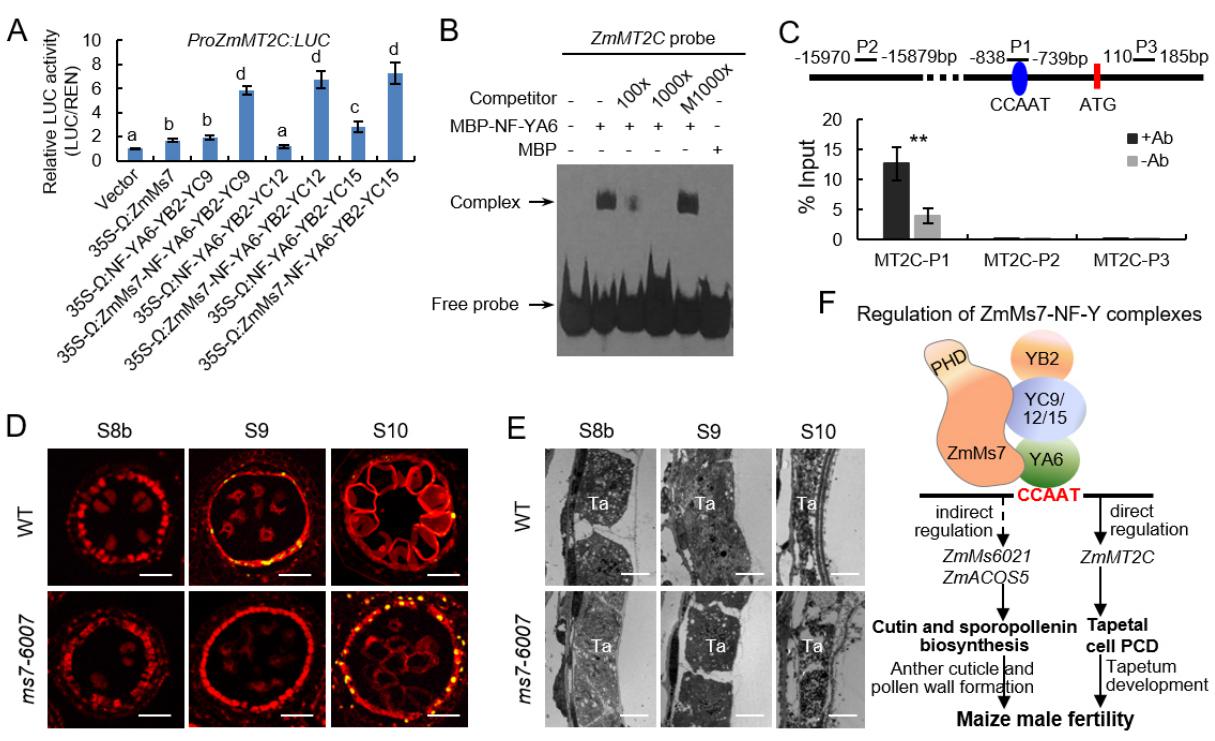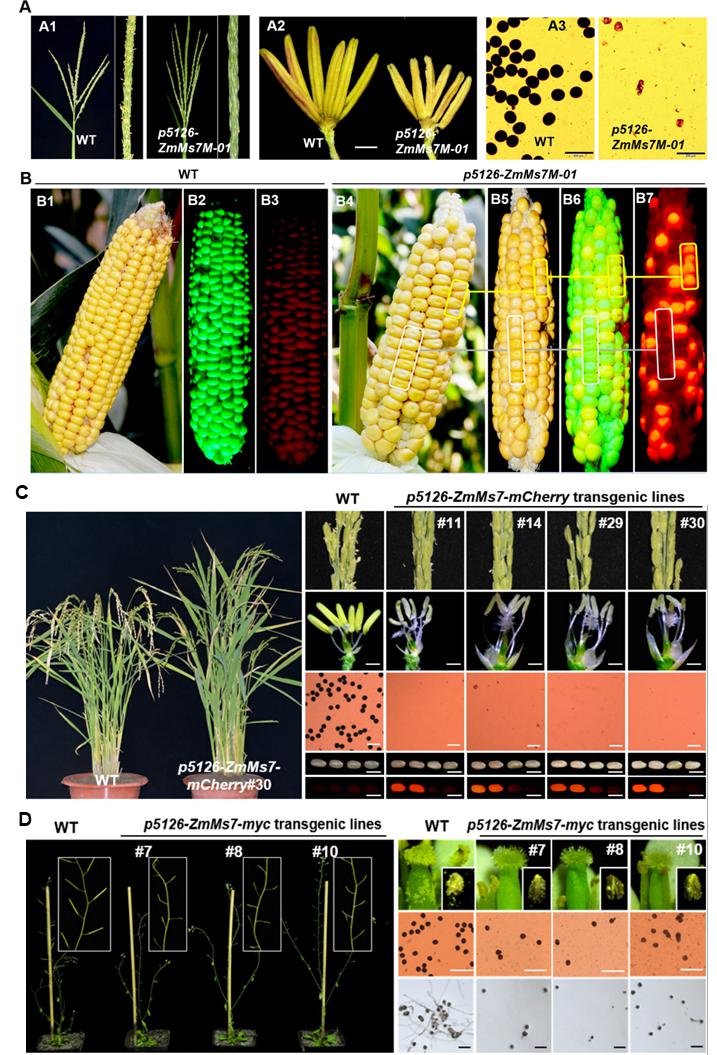IF: 9.412: Xueli An (etc.) Molecular Regulation of ZmMs7 Required for Maize Male Fertility and Development of a Dominant Male-sterility System in Multiple Species
IF: 9.412: Xueli An (etc.) Molecular Regulation of ZmMs7 Required for Maize Male Fertility and Development of a Dominant Male-sterility System in Multiple Species
Xueli An#, Biao Ma#, Meijuan Duan#, Zhenying Dong#, Ruogu Liu, Dingyang Yuan, Quancan Hou, Suowei Wu, Danfeng Zhang, Dongcheng Liu, Dong Yu, Yuwen Zhang, Ke Xie, Taotao Zhu, Ziwen Li, Simiao Zhang, Youhui Tian, Chang Liu, Jinping Li, Longping Yuan*, and Xiangyuan Wan*.
Published: September 9, 2020 https://doi.org/10.1073/pnas.2010255117
Abstract
Understanding the molecular basis of male sterility and developing practical male-sterility systems are essential for heterosis utilization and commercial hybrid seed production in crops. Here, we report molecular regulation by genic male-sterility gene maize male sterility 7 (ZmMs7) and its application for developing a dominant male-sterility system in multiple species. ZmMs7 is specifically expressed in maize anthers, encodes a plant homeodomain (PHD) finger protein that functions as a transcriptional activator, and plays a key role in tapetal development and pollen exine formation. ZmMs7 can interact with maize nuclear factor Y (NF-Y) subunits to form ZmMs7-NF-YA6-YB2-YC9/12/15 protein complexes that activate target genes by directly binding to CCAAT box in their promoter regions. Premature expression of ZmMs7 in maize by an anther-specific promoter p5126 results in dominant and complete male sterility but normal vegetative growth and female fertility. Early expression of ZmMs7 downstream genes induced by prematurely expressed ZmMs7 leads to abnormal tapetal development and pollen exine formation in p5126-ZmMs7 maize lines. The p5126-ZmMs7 transgenic rice and Arabidopsis plants display similar dominant male sterility. Meanwhile, the mCherry gene coupled with p5126-ZmMs7 facilitates the sorting of dominant sterility seeds based on fluorescent selection. In addition, both the ms7-6007 recessive male-sterility line and p5126-ZmMs7M dominant male-sterility line are highly stable under different genetic germplasms and thus applicable for hybrid maize breeding. Together, our work provides insight into the mechanisms of anther and pollen development and a promising technology for hybrid seed production in crops.
Keywords: ZmMs7 | PHD finger | protein-protein interaction | dominant male-sterility system
Link:
1.Xueli An#, Biao Ma#, Meijuan Duan#, Zhenying Dong#, Ruogu Liu, Dingyang Yuan, Quancan Hou, Suowei Wu, Danfeng Zhang, Dongcheng Liu, Dong Yu, Yuwen Zhang, Ke Xie, Taotao Zhu, Ziwen Li, Simiao Zhang, Youhui Tian, Chang Liu, Jinping Li, Longping Yuan*, and Xiangyuan Wan*. (2020) Molecular Regulation of ZmMs7 Required for Maize Male Fertility and Development of a Dominant Male-sterility System in Multiple Species. Proc Natl Acad Sci, DOI: https://doi.org/10.1073/pnas.2010255117. https://www.pnas.org/content/early/2020/09/08/2010255117

Fig. 1. ZmMs7-NF-YA/YB/YC complexes directly activate target gene expression. (A) Transient dual-luciferase assay of ZmMT2C promoter activity activated by ZmMs7-NF-Y complexes in maize protoplasts. (B) EMAS assay of ZmNF-YA6 binding the CCAAT box in ZmMT2C promoter region. (C) The enrichments of ZmMT2C promoter analyzed by ChIP-qPCR with the primer sets (P1, P2 and P3), using the anther samples of ZmMs7-3x Myc transgenic maize plants. (D) Detection of DNA fragmentation by TUNEL assay in WT and ms7-6007 anthers. (E) TEM of tapetum degeneration in WT and ms7-6007 anthers. (F) Model of ZmMs7-NF-YA/YB/YC complexes controlling maize male fertility through directly activating ZmMT2C expression and indirectly regulating cutin and sporopollenin biosynthesis-related genes such as ZmMs6021, ZmLAP5, ZmDRL1/2, and ZmACOS5.

Fig. 2. Dominant male-sterility phenotype of p5126-ZmMs7 transgenic maize (A-B), rice (C) and Arabidopsis plants (D).

